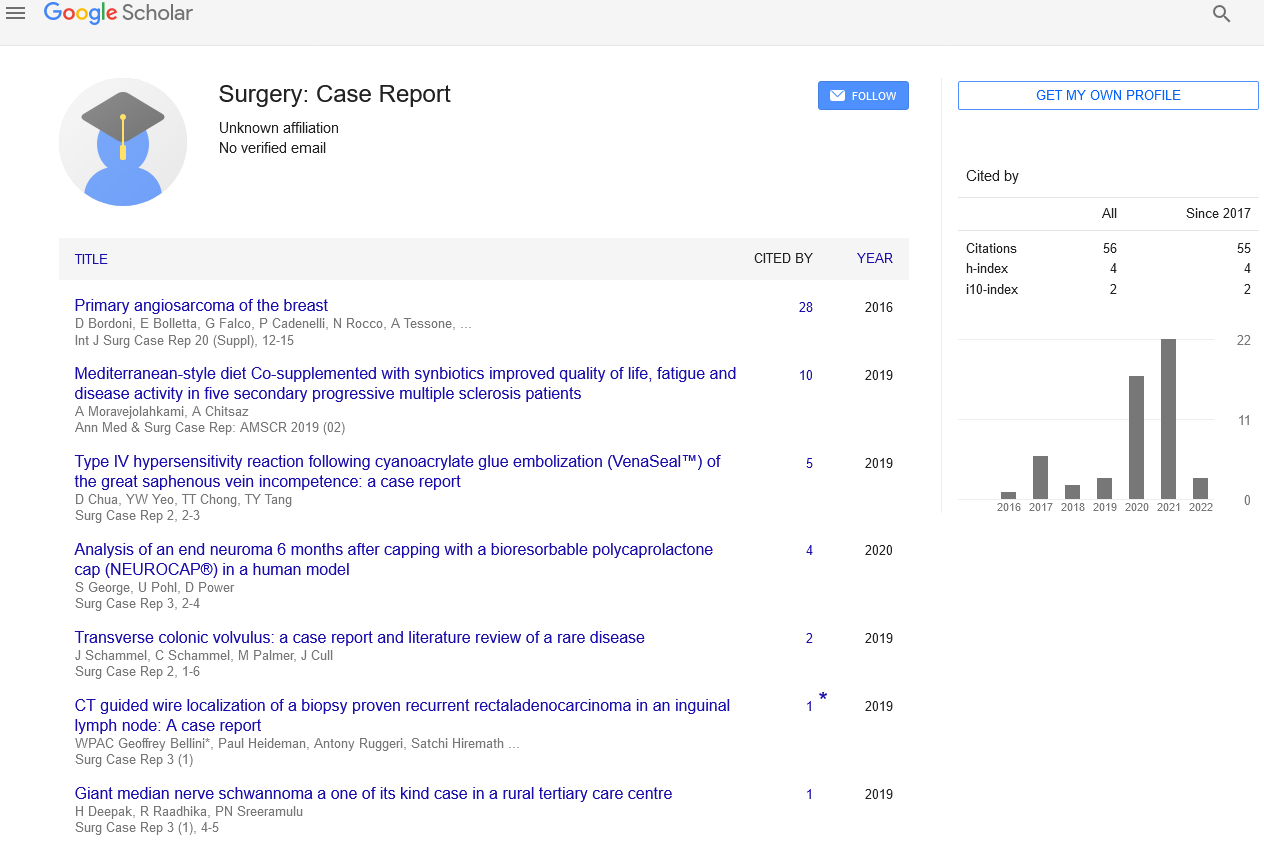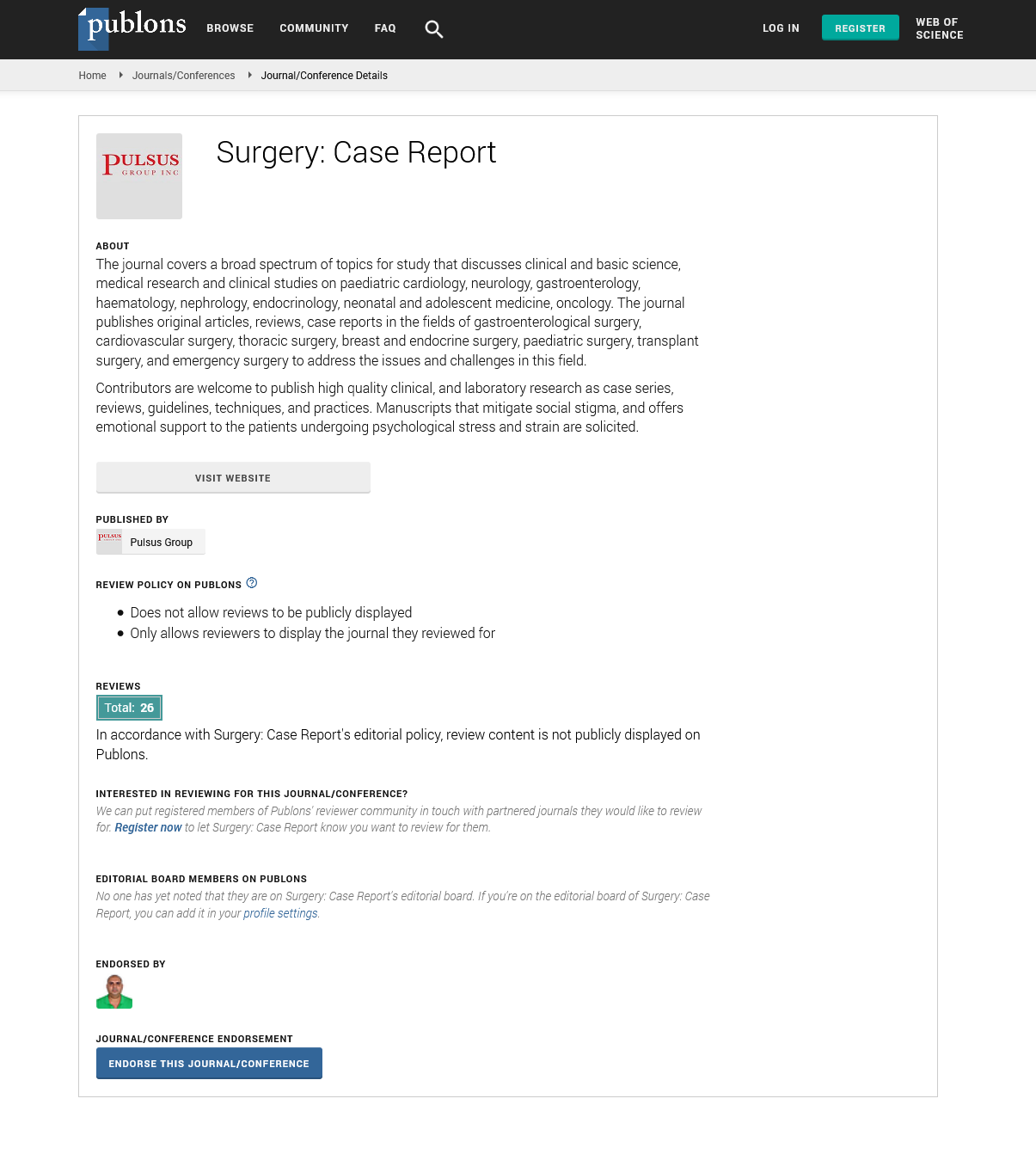The Path to a Cure for Glaucoma
Received: 02-Mar-2021 Accepted Date: Mar 19, 2021; Published: 22-Mar-2021
Citation: Spandana V. The Path to a Cure for Glaucoma. Surg Case Rep 2021; 5:2.3.
This open-access article is distributed under the terms of the Creative Commons Attribution Non-Commercial License (CC BY-NC) (http://creativecommons.org/licenses/by-nc/4.0/), which permits reuse, distribution and reproduction of the article, provided that the original work is properly cited and the reuse is restricted to noncommercial purposes. For commercial reuse, contact reprints@pulsus.com
Editorial
Glaucoma treatment presently falls contained by three basic classifications: medication, incisional surgery, and laser treatments. All of these are targeted at lowering intraocular pressure (IOP) inside the eye. Though these are effective for maximum patients, several continue to lose vision through injury to the optic nerve. For them, here is a great need for treatments that stopover the progress independent of IOP.
The possible treatment, which could grow into the first non-drug, nonsurgical, long-acting therapy for glaucoma, uses the dose of a natural and biodegradable material to generate a viscous hydrogel -- a water-absorbing cross-linked polymer structure -- that unlocks an alternate pathway for extra fluid to leave the eye.
The research, which was supported by the National Eye Institute and the Georgia Research Alliance, was published Dec. 7 in the journal Advanced Science. The research was conducted in animals, and displays that the method considerably lowered the intraocular pressure. As 75 million people worldwide have glaucoma, which is the leading cause of irreversible blindness. Glaucoma injury is produced by excess pressure in the eye that injures the optic nerve. Current treatments efforts to reduce this intraocular pressure through the daily use of eye drops, or through surgery or implantation of medical devices, but these treatments are frequently unsuccessful. The pressure reduction was constant for four months. The researchers are now working to cover that time by changing the polymer material -- hyaluronic acid -- with a goal of providing treatment benefits for at least six months.
To give another option, Either collaborated with Mark Prausnitz, educator and J. Erskine Love Jr. Seat in the School of Chemical and Bio molecular Engineering at Georgia Tech, to utilize a little empty needle to infuse a polymer planning into a design just beneath the outside of the eye called the suprachoroidal space (SCS). Inside the eye, the material synthetically crosslinks to shape the hydrogel, which holds open a direct in the SCS that permits watery humor from inside the eye to deplete out of the eye through the elective pathway. There are ordinarily two pathways for the watery humor liquid to leave the eye. The predominant way is through a construction known as the trabecular meshwork, which is situated at the front of the eye. The lesser pathway is through the SCS, which ordinarily has just an exceptionally little hole. In glaucoma, the predominant pathway is hindered, so to decrease pressure, medicines are made to open the lesser pathway enough to allow the fluid humor to stream out. In this examination, the hydrogel props open the SCS way. An empty microneedle not exactly a millimeter long is utilized to infuse a drop (around 50 microliters) of the hydrogel-forerunner material. That gel construction can keep the SCS pathway open for a time of months. “We infuse a thick material and keep it at the site of the infusion at the interface between the rear of the eye and the front of the eye where the suprachoroidal space starts,” Prausnitz said. “By opening up that space, we tap a pathway that would not in any case be used effectively to eliminate fluid from the eye.”






